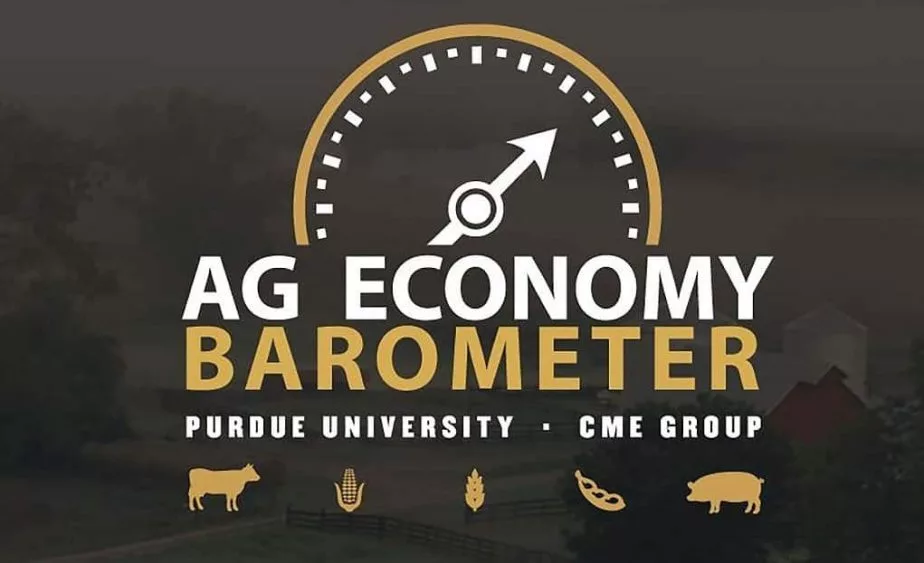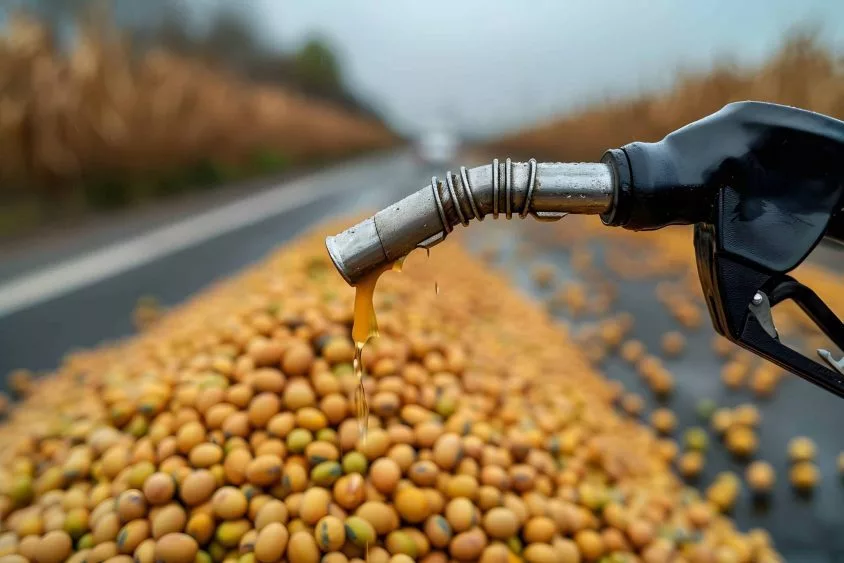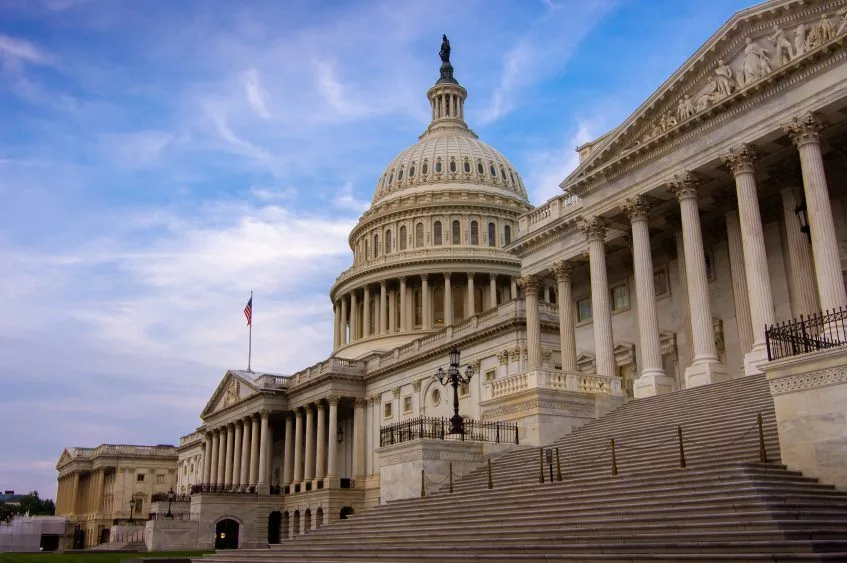
WEST LAFAYETTE, Ind. — Farmer sentiment declined in March as concerns over agricultural trade and farm policy weighed on producers’ outlook for the future. The Purdue University/CME Group Ag Economy Barometer fell 12 points to a reading of 140, down from 152 a month earlier. Contributing to the weakened sentiment in March was a 15-point drop in the Index of Future Expectations to 144 and the Current Conditions Index falling 5 points to 132. The drop in sentiment was influenced by falling crop prices since mid-February, along with increasing uncertainty surrounding agricultural trade and farm policy. Despite the decline, producers remained more optimistic about future conditions than the present, with the Future Expectations Index remaining higher than the Current Conditions Index by 12 points. This month’s survey was conducted between March 10-14.
Alongside the weakened sentiment, the Farm Capital Investment Index fell 5 points to 54 in March. Despite the dip, it is the second-highest reading since June 2021. The Farm Financial Performance Index also saw a drop, decreasing 8 points to 102. While slightly above 100, the index indicates that, on average, producers still anticipate their farm’s financial performance to improve compared to a year ago.
The Short-Term Farmland Value Expectations Index remained steady at 118 in March, matching the previous month’s level and only 6 points below its reading from a year ago. Except for the late summer and early fall of 2024, when sentiment was more pessimistic, the index has generally ranged between 110 and 126 since early 2023. This suggests that farmers maintain a cautious outlook for farmland values, anticipating they will either remain stable or increase modestly in the coming year.
“While the overall sentiment shift in March reflects growing uncertainty, farmers remain cautiously optimistic about the future, particularly with farmland values holding steady and the outlook for strong returns in the livestock sector helping to offset weaker expectations among crop producers,” said Michael Langemeier, the barometer’s principal investigator and director of Purdue University’s Center for Commercial Agriculture.
Since 2019, the barometer surveys have asked producers about their expectations for U.S. agricultural exports over the next five years. Historically, exports have been a primary driver of U.S. agricultural production demand and are closely linked to strong farm incomes. Producers reported they were optimistic about export growth in 2019 and 2020 surveys, but that optimism began to decline in 2021 and has continued to erode. In March, expectations for U.S. exports reached a record low in the survey, with 30% of producers anticipating a decline in exports, nearly matching the 33% who expect exports to rise.
In addition to worries about exports, farmers’ focus on agricultural policy has shifted over the past year. Since late 2022, barometer surveys have regularly asked producers to identify the most important policies or programs for their farms in the next five years. Before the November 2024 election, farmers reported a higher focus on interest rate policy than trade policy. However, since the election, trade policy has become a fast-growing concern, with 43% of respondents, on average, now citing it as the most critical issue impacting their farms, up sharply from an average of just 21% prior to the election.
Uncertainties about trade policy and its potential impact on U.S. agricultural exports are closely tied to farmers’ expectations for farm income. The March survey asked producers about the likelihood of a program similar to 2019’s Market Facilitation Program, created to compensate for lower output prices due to a trade war. Approximately two-thirds of respondents believe a follow-up to such a program is either “likely” (52%) or “very likely” (13%) to be implemented. Additionally, 74% of farmers in March indicated that the passage of a new farm bill this year was either “very important” (49%) or “important” (25%) to them.
About the Purdue University Center for Commercial Agriculture
The Center for Commercial Agriculture was founded in 2011 to provide professional development and educational programs for farmers. Housed within Purdue University’s Department of Agricultural Economics, the center’s faculty and staff develop and execute research and educational programs that address the different needs of managing in today’s business environment.
About CME Group
As the world’s leading derivatives marketplace, CME Group enables clients to trade futures, options, cash and OTC markets, optimize portfolios, and analyze data — empowering market participants worldwide to efficiently manage risk and capture opportunities. CME Group exchanges offer the widest range of global benchmark products across all major asset classes based on interest rates, equity indexes, foreign exchange, energy, agricultural products and metals. The company offers futures and options on futures trading through the CME Globex platform, fixed income trading via BrokerTec and foreign exchange trading on the EBS platform. In addition, it operates one of the world’s leading central counterparty clearing providers, CME Clearing.
CME Group, the Globe logo, CME, Chicago Mercantile Exchange, Globex, and E-mini are trademarks of Chicago Mercantile Exchange Inc. CBOT and Chicago Board of Trade are trademarks of Board of Trade of the City of Chicago, Inc. NYMEX, New York Mercantile Exchange and ClearPort are trademarks of New York Mercantile Exchange, Inc. COMEX is a trademark of Commodity Exchange, Inc. BrokerTec is a trademark of BrokerTec Americas LLC and EBS is a trademark of EBS Group LTD. The S&P 500 Index is a product of S&P Dow Jones Indices LLC (“S&P DJI”). “S&P®”, “S&P 500®”, “SPY®”, “SPX®”, US 500 and The 500 are trademarks of Standard & Poor’s Financial Services LLC; Dow Jones®, DJIA® and Dow Jones Industrial Average are service and/or trademarks of Dow Jones Trademark Holdings LLC. These trademarks have been licensed for use by Chicago Mercantile Exchange Inc. Futures contracts based on the S&P 500 Index are not sponsored, endorsed, marketed, or promoted by S&P DJI, and S&P DJI makes no representation regarding the advisability of investing in such products. All other trademarks are the property of their respective owners.
About Purdue University
Purdue University is a public research university leading with excellence at scale. Ranked among top 10 public universities in the United States, Purdue discovers, disseminates and deploys knowledge with a quality and at a scale second to none. More than 107,000 students study at Purdue across multiple campuses, locations and modalities, including more than 58,000 at our main campus in West Lafayette and Indianapolis. Committed to affordability and accessibility, Purdue’s main campus has frozen tuition 13 years in a row. See how Purdue never stops in the persistent pursuit of the next giant leap — including its comprehensive urban expansion, the Mitch Daniels School of Business, Purdue Computes and the One Health initiative — at https://www.purdue.edu/



